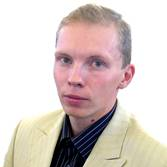Regeneration: Biology and Medicine
A special issue of Life (ISSN 2075-1729). This special issue belongs to the section "Cell Biology and Tissue Engineering".
Deadline for manuscript submissions: closed (25 May 2022) | Viewed by 19424
Special Issue Editors
Interests: regeneration; liver; macrophages; monocytes; Kupffer cells
Interests: mesenchimal stem cells; neuronal progenitor cells; polymer films; regenerative medicine
Interests: acute kidney injury; renal progenitor cells; mitochondria; mesenchymal stromal cells; inflammation
Special Issues, Collections and Topics in MDPI journals
Special Issue Information
Dear Colleagues,
The role of regeneration in the maintenance of life and the normal functioning of the organism is hard to overestimate. Usually, researchers distinguish two types of regeneration: physiological and reparative. However, the interconnection of these two types is poorly understood. Physiological regeneration is based on proliferation, cellular polyploidy, hypertrophy, and intracellular organelle renewal. A classic example of a reparative type is limb regeneration in amphibians. Regeneration in hydra and planaria has historically been used as examples of classical reparative regeneration; however, it needs to be studied in other models, including mammals. Despite the greater variety of reparative regeneration forms—the participation of macrophages, cellular dedifferentiation, activation of progenitor cells in the damaged organ—all regeneration mechanisms have common features. Macrophages are key players in tissue homeostasis. More and more research is now directed towards reprogramming macrophages to stimulate regeneration. Regenerative medicine is undergoing a surge in research with the discovery of embryonic stem cells, induced pluripotent stem cells and the study of their role in the repair of damaged tissue. In this regard, this Special Issue proposes to provide data on the mechanisms of regeneration of vertebrates and invertebrates. Given the importance of the topic, in addition to fundamental works, the submission of applied works on methods of stimulating regeneration using stem cells, methods of tissue and genetic engineering, and cellular technologies is encouraged.
Dr. Andrey Elchaninov
Dr. Timur Fatkhudinov
Prof. Dr. Egor Yu. Plotnikov
Guest Editors
Manuscript Submission Information
Manuscripts should be submitted online at www.mdpi.com by registering and logging in to this website. Once you are registered, click here to go to the submission form. Manuscripts can be submitted until the deadline. All submissions that pass pre-check are peer-reviewed. Accepted papers will be published continuously in the journal (as soon as accepted) and will be listed together on the special issue website. Research articles, review articles as well as short communications are invited. For planned papers, a title and short abstract (about 100 words) can be sent to the Editorial Office for announcement on this website.
Submitted manuscripts should not have been published previously, nor be under consideration for publication elsewhere (except conference proceedings papers). All manuscripts are thoroughly refereed through a single-blind peer-review process. A guide for authors and other relevant information for submission of manuscripts is available on the Instructions for Authors page. Life is an international peer-reviewed open access monthly journal published by MDPI.
Please visit the Instructions for Authors page before submitting a manuscript. The Article Processing Charge (APC) for publication in this open access journal is 2600 CHF (Swiss Francs). Submitted papers should be well formatted and use good English. Authors may use MDPI's English editing service prior to publication or during author revisions.
Keywords
- physiological and reparative regeneration
- regenerative medicine
- cell proliferation
- regeneration of vertebrates and invertebrates
- stem cells
Benefits of Publishing in a Special Issue
- Ease of navigation: Grouping papers by topic helps scholars navigate broad scope journals more efficiently.
- Greater discoverability: Special Issues support the reach and impact of scientific research. Articles in Special Issues are more discoverable and cited more frequently.
- Expansion of research network: Special Issues facilitate connections among authors, fostering scientific collaborations.
- External promotion: Articles in Special Issues are often promoted through the journal's social media, increasing their visibility.
- Reprint: MDPI Books provides the opportunity to republish successful Special Issues in book format, both online and in print.
Further information on MDPI's Special Issue policies can be found here.








